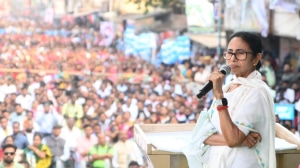food subsidies benefitting richer states
The Government of India has made provisions to provide minimum nutritional support to the poor through subsidised...

The Government of India has made provisions to provide minimum nutritional support to the poor through subsidised foodgrains and also ensuring price stability in the various states. These are the twin objectives of the food security system. By fulfilling the obligation towards distributive justice, the government incurs food subsidies.
While the total amount of food subsidies has risen considerably over the past few years, the state-wise allocation of subsidies do not appear to be in relation to the poverty levels in the states. The ratio of the percentage allocation of subsidies as given by the offtake of foodgrains under the Targeted Public Distribution System (TDPS) and the proportion of people below poverty line (BPL) is less than one in many of the country’s poorer states.
Bihar, Madhya Pradesh and Uttar Pradesh show a tremendous disparity in their BPL percentage and food subsidies allocated. The ratio for Maharashtra is also negative. The southern states of Tamil Nadu and Andhra Pradesh have the maximum allocated food subsidies though their BPL population in relation to the poorer states is lower.



- 01
- 02
- 03
- 04
- 05




























